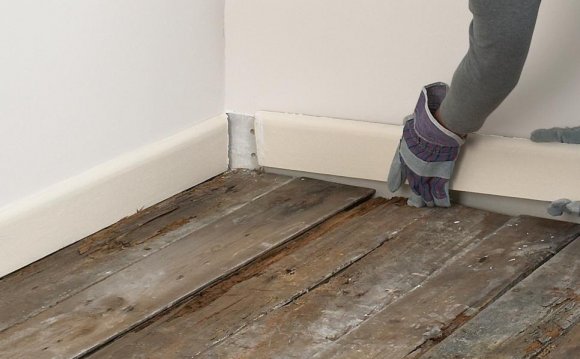
Tile can contribute thermal massHeavy, high-heat-capacity material that can absorb and store a significant amount of heat; used in passive solar heating to keep the house warm at night. to a passive solar house, and to Christa Campbell it would make a more appealing finish floor than concrete.
The question for Campbell is whether using Ditra offsets some of the thermal mass gains in a passive-solar design.
“I’m wondering if you can lay tile over a concrete subfloor without compromising the thermal mass capacity of the concrete, ” she writes in a Q&A post at GreenBuildingAdvisor. “Would an uncoupling system, using something like Ditra, have a negative impact? Should we be looking at using sand instead?”
Campbell’s question is the topic for this week’s Q&A Spotlight.
Lay the tile directly on the concrete
Yes, writes Doug McEvers, Ditra will insulate the concrete slab from the tile and lower the potential for thermal storage. “There is nothing wrong with tile laid directly on concrete providing all precautions are taken regarding moisture proofing, ” he says. “Tile and grout work loose if the underlayment flexes. I can't think of a more durable surface than a concrete slab for holding tile — try removing it sometime. Tile, if installed properly and as long as what's underneath is solid, will last a long, long time.”
Insulation should be installed beneath the slab, McEvers adds, while the choice of tile also is important: dark tiles will absorb more heat than light-colored tile.
James Morgan agrees with McEvers. Citing Schluter’s own description of Ditra as an uncoupling membrane that permits differential movement between a lightweight substrate (such as a wood subfloor) and tile, Morgan says it’s “entirely unnecessary” between tile and a heavy material such as concrete.
That said, he adds, the effect of the membrane on the thermal properties of the concrete would be “barely measurable.”
No, you need an uncoupling membrane
William Geary isn’t buying it. “I will disagree with those who say you don't need an uncoupling membrane when tiling over concrete, ” he writes. “This is just wrong and if you plan to use passive solar (especially with sunlight on the slab) you need to use an uncoupling membrane.”
The problem is that a concrete slabs routinely develops cracks, and when it does the membrane will prevent the problems from telegraphing into the tile. “It will also reduce the stress of uneven thermal expansion on a passive solar floor, ” Geary writes. “You will need to pay attention to expansion joints in the tile as well.”
Geary has installed heating mats under Ditra and finds no problem with getting his tile floor warm. If Campbell doesn’t want to use Schluter’s products, there are alternatives, such as those made by the Noble Company.
Choose a middle ground
GBAGreenBuildingAdvisor.com advisor Michael Chandler believes the best strategy is somewhere in the middle between these two positions.
First, he writes, the slab should be isolated from the footings so it can shrink independently as it cures. And the slab also should have control joints that help make any cracks in the concrete more predictable. “This impacts tile because, once you can accurately predict where the slab is likely to crack you can place the uncoupling membrane in those locations only, ” Chandler says. “(This has the side benefit of saving on the cost of the membrane). We just run a strip of Ditra, Noble or Rolled Gold or whatever membrane is your preference approximately three tiles wide in the areas over the expansion joints.”
“James is entirely correct, ” he continues. “The tile will be fine so long as the concrete doesn't crack and William is correct that concrete will inevitably crack and the membrane has very little impact on heat transfer as it has negligible R-valueMeasure of resistance to heat flow; the higher the R-value, the lower the heat loss. The inverse of U-factor. .”
“Michael raises a very important point about leaving an expansion gap around the perimeter of the tile floor, ” Geray adds. “If you are placing baseboard over the tile, leave a 1/2-inch gap around the entire perimeter. Because tilers will inevitably fill some of this gap with thinset, you can place 1/2-inch foam weatherstrip around the room or tack in a strip of 1/2 inch plywood around the room and pull it out after the tile is grouted.”
Our expert’s opinion
GBA technical director Peter Yost had this to add:
Back in the 1980s, when I worked full-time as a remodeler, I laid a lot of ceramic tile. And I never used a “slip sheet” or “anti-fracture membrane” or “reflective cracking” protection when I laid ceramic floor tile over any substrate.
And now I shudder to think of how many of my floor installations have telegraphed cracking because movement or curing in the substrate was not decoupled from the ceramic tile.
To match a durable installation to the durable floor finish (ceramic floor tile), you need to decouple the tile from the substrate, even concrete. It’s a bond break, just as with any cementitious system. A great resource/quick read on this is an online Tile Letter "Getting Serious with Crack Isolation Membranes." There are now lots of different products and approaches, but you need one.









